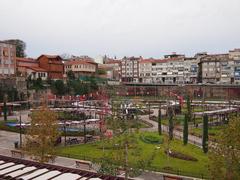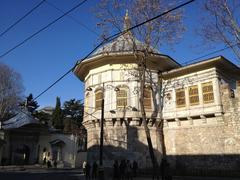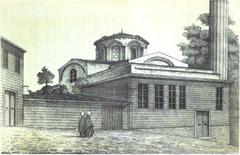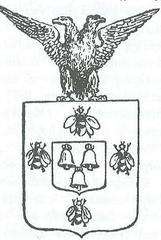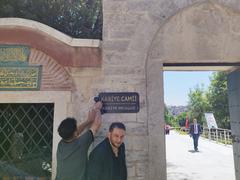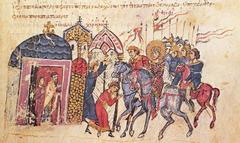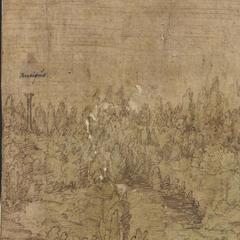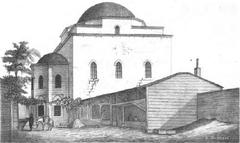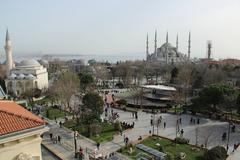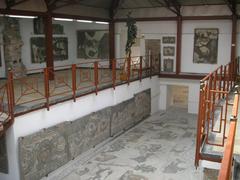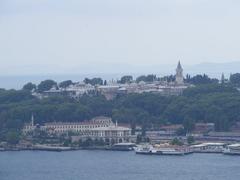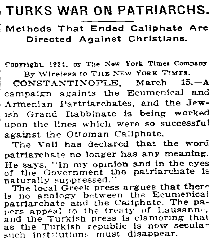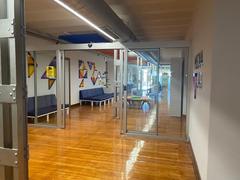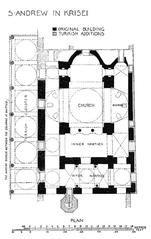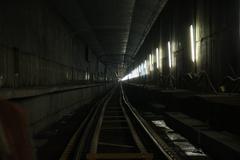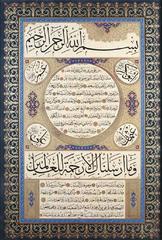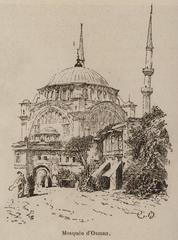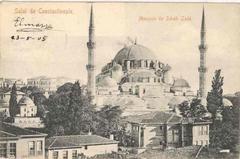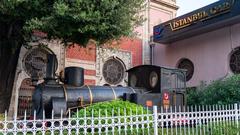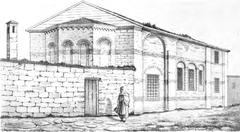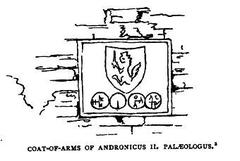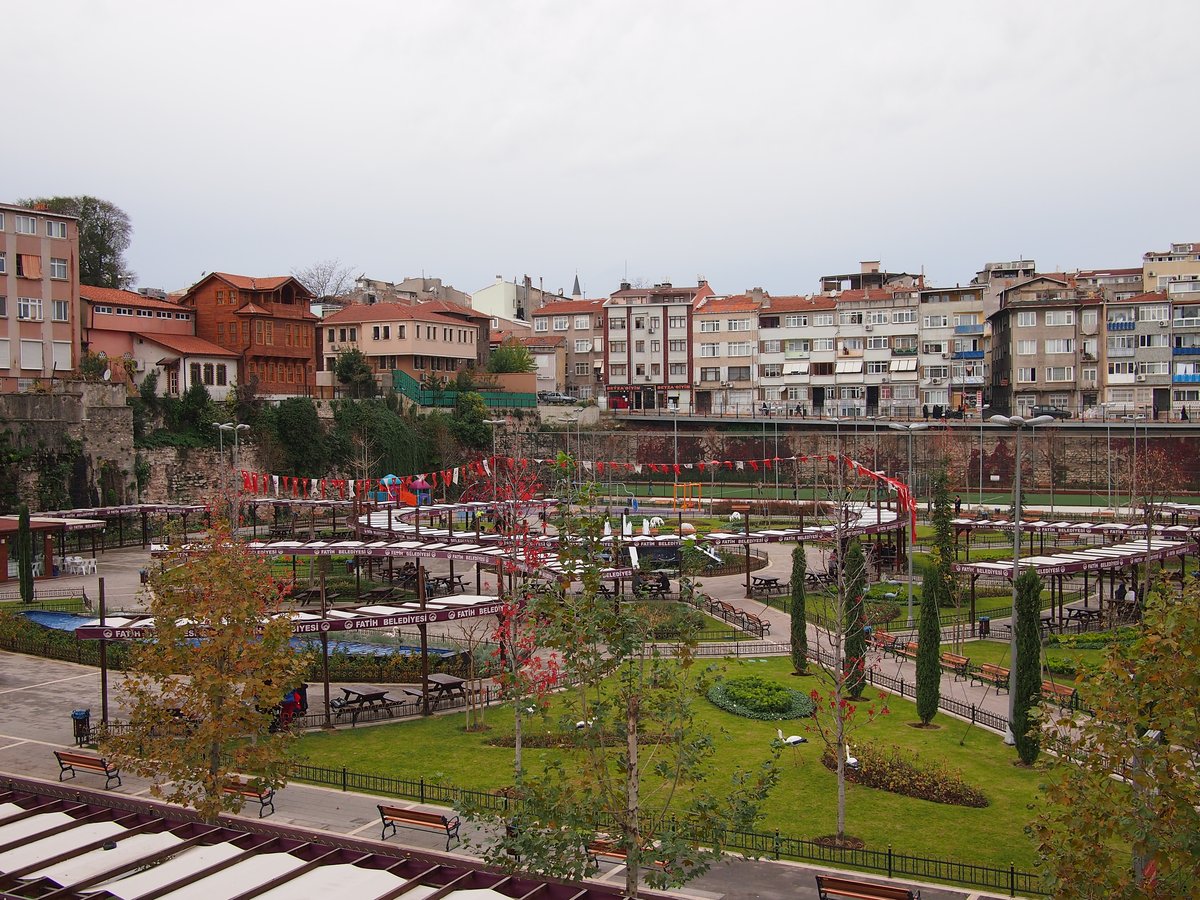
Cistern of Aspar Visiting Hours, Tickets, and Historical Significance in Fatih, Turkey
Date: 15/06/2025
Introduction
Nestled within Istanbul’s historic Fatih district, the Cistern of Aspar (Aspar Sarnıcı) stands as a striking testament to the city’s Byzantine engineering and layered urban past. Commissioned in the 5th century CE by the powerful general Flavius Aspar, this monumental open-air reservoir once played a crucial role in supplying water to ancient Constantinople. Over centuries, the cistern has transformed from a vital hydraulic structure to a sunken garden, residential enclave, and now a vibrant public park and community center. This detailed guide explores the historical significance, architecture, visitor information, and travel tips to help you make the most of your visit to this hidden gem among Istanbul historical sites.
For detailed historical context and updates, consult official sources such as the Fatih Municipality and The Byzantine Legacy.
Contents
- Introduction
- Historical Background
- Origins and Construction
- Architectural Features and Capacity
- Role in Byzantine Constantinople
- Ottoman Transformation and Urban Evolution
- Modern Restoration and Current Use
- Visitor Information
- Visiting Hours
- Ticket Prices and Entry
- Accessibility and Facilities
- Travel Tips
- Nearby Attractions
- Special Events and Guided Tours
- Photography
- Frequently Asked Questions (FAQ)
- Visual and Interactive Resources
- Related Historical Sites in Istanbul
- Summary and Visitor Recommendations
- Sources
Historical Background
Origins and Construction
The Cistern of Aspar, also known as the Great Cistern (Greek: μεγίστη κινστέρνη; Turkish: Sarnıç-ı Kebir), was constructed in 459 CE under the supervision of Flavius Aspar. Its primary function was to alleviate water shortages in Constantinople, especially during arid summers and sieges. The cistern’s design, a near-square basin measuring approximately 152 meters per side and around 10–11 meters deep, was engineered to store an estimated 250,000 cubic meters of water. This massive capacity was achieved with brick and stone walls up to 5.2 meters thick and waterproof mortar, reflecting the advanced hydraulic knowledge of the late Roman and early Byzantine periods. Brick stamps and the addition of a water tower near the northwest corner further authenticate its 5th-century origins and advanced hydraulic innovation (Wikipedia; The Byzantine Legacy; Ibn Battuta Travel; My Beautiful Istanbul).
Architectural Features and Capacity
Unlike the more famous underground Basilica Cistern, the Aspar Cistern is open-air. Its immense, nearly square layout enabled gravity-fed distribution of water collected from rain and the Aqueduct of Valens. The thick, durable walls were designed to withstand both water pressure and Istanbul’s seismic activity, underscoring the resilience of late antique engineering (My Beautiful Istanbul).
Role in Byzantine Constantinople
Strategically situated on Constantinople’s fifth hill near the Golden Horn, the cistern supported the city’s water supply network, feeding public baths, households, and palaces. Its vast capacity was especially crucial during sieges when external water sources were inaccessible. Alongside the Aetius and Fildamı cisterns, Aspar formed a core part of the city’s vital infrastructure (Hurriyet Daily News; The Byzantine Legacy).
Ottoman Transformation and Urban Evolution
Following the Ottoman conquest in 1453, the cistern was gradually repurposed as a “çukurbostan” (sunken garden), its fertile environment ideal for vegetable cultivation. Over time, a residential community with wooden houses and a small mosque (Çukurbostan Mescidi, built 1565/66) developed within its sunken confines. By the mid-20th century, the area saw significant urbanization, and many original structures were replaced with concrete buildings. Eventually, the site was cleared and reimagined as a public space (The Byzantine Legacy).
Modern Restoration and Current Use
Today, after extensive restoration led by Fatih Municipality, the Cistern of Aspar functions as the Yavuz Selim Life Centre. The area now features playgrounds, sports facilities, and exercise equipment, providing a unique recreational environment within the preserved ancient walls. This transformation highlights Istanbul’s ability to adapt historical infrastructure for modern community use (Fatih Municipality; Ibn Battuta Travel).
Visitor Information
Visiting Hours
- Public Park: Open 24 hours daily, allowing maximum flexibility for visitors (Ibn Battuta Travel).
- Yavuz Selim Life Centre: Facilities may maintain specific operating hours (usually Tuesday to Sunday, 9:00 AM to 7:00 PM; closed Mondays and public holidays). Check the Fatih Municipality website for up-to-date details.
Ticket Prices and Entry
- Admission: Free of charge for all visitors. No advance booking required for general entry.
- Guided Tours: Not offered regularly, but some local tour companies or cultural organizations may include the cistern in their itineraries. Check with local tour operators for availability.
Accessibility and Facilities
- Accessibility: The park’s open layout and gently sloped pathways offer reasonable access for visitors with limited mobility. Some uneven terrain is present due to the historic nature of the site.
- Restrooms and Amenities: Basic facilities are available within the Yavuz Selim Life Centre. Additional cafes, restaurants, and public restrooms can be found in the surrounding Fatih district.
- Luggage Storage: Not available on-site; consider using nearby options at Sultanahmet Square or Sirkeci station if needed (Basilica Cistern Tickets).
Travel Tips
- Location: Fatih district, near Yavuz Selim Mosque and overlooking the Golden Horn.
- Public Transport: Reachable via tram (Çarşamba or Sultanahmet stops on the T1 line), bus, or taxi. From Taksim, take the F1 funicular to Kabataş, transfer to T1 tram, and alight at Sultanahmet (Istanbul Travel Blog).
- Best Time to Visit: Early mornings or late afternoons (especially in spring and autumn) offer cooler conditions, fewer visitors, and the best lighting for photography (Travel Store Turkey).
- What to Bring: Comfortable, non-slip footwear, a camera, and drinking water.
Nearby Attractions
Combine your visit to the Cistern of Aspar with other historical sites in Fatih, such as:
- Basilica Cistern
- The Fatih Mosque
- The Grand Bazaar
- The Chora Church (Kariye Museum)
Special Events and Guided Tours
Cultural events, exhibitions, and community gatherings occasionally take place at the site. For updates, follow Fatih Municipality and the Yavuz Selim Life Centre’s social media channels.
Photography
Photography is permitted for personal use. The preserved walls, sunken garden, and atmospheric lighting offer excellent photo opportunities. Use caution, as some areas may have uneven surfaces or low railings; tripods and commercial equipment generally require prior permission.
Frequently Asked Questions (FAQ)
Q: What are the opening hours of the Cistern of Aspar?
A: The public park is open 24/7; community facilities have specific hours (usually 9:00 AM–7:00 PM, closed Mondays).
Q: Is there an entrance fee?
A: No, entry is free of charge.
Q: Is the site wheelchair accessible?
A: Access is generally good, though some uneven terrain may exist.
Q: Are guided tours available?
A: Occasionally, via local tour operators; check current offerings.
Q: Can I take photographs?
A: Yes, for personal use.
Q: Are restrooms and cafes available?
A: Basic facilities are provided within the life centre; more options are found nearby.
Q: Is it suitable for children?
A: Yes, with playgrounds and open spaces.
Visual and Interactive Resources
- Preview the site through online galleries and virtual tours at Fatih Municipality and The Byzantine Legacy.
- High-quality images with alt tags such as “Cistern of Aspar open-air Byzantine reservoir” and “Historic walls of Cistern of Aspar park” enhance accessibility and SEO.
- For maps and interactive navigation, see the Istanbul Travel Blog.
Related Historical Sites in Istanbul
Expand your exploration with these other notable Byzantine and Ottoman sites:
Summary and Visitor Recommendations
The Cistern of Aspar exemplifies Istanbul’s ability to preserve and adapt its ancient infrastructure for modern life. Once a monumental Byzantine reservoir, then an Ottoman garden and residential quarter, and now a tranquil urban park, the site is a living chronicle of the city’s resilience and cultural transformation. Visitors benefit from free access, rich historical context, and proximity to other top attractions in the Fatih district. Whether you’re drawn by Byzantine engineering, Ottoman-era urbanism, or the desire to experience Istanbul’s living history, the Cistern of Aspar is a must-visit destination.
For updates on hours, special events, and restoration work, consult the Fatih Municipality, The Byzantine Legacy, and consider using the Audiala app for interactive maps and guided tours.
Sources
- Restoration of the Aspar Cistern Underway, 2023, Fatih Municipality (https://www.fatih.bel.tr/en/main/news/restoration-of-the-aspar-cistern-underway/3786)
- Cistern of Aspar, 2025, The Byzantine Legacy (https://www.thebyzantinelegacy.com/aspar-cistern)
- Cistern of Aspar, 2025, Wikipedia (https://en.wikipedia.org/wiki/Cistern_of_Aspar)
- Historical Cisterns of Istanbul, 2019, My Beautiful Istanbul (https://www.mybeautifulistanbul.com/2019/02/25/historical-cisterns-of-istanbul/)
- Cisterns of Istanbul Serve Cultural Life, 2018, Hurriyet Daily News (https://www.hurriyetdailynews.com/cisterns-of-istanbul-serve-cultural-life-132378)
- Cistern of Aspar, 2025, Ibn Battuta Travel (https://en.ibnbattutatravel.com/place/cistern-of-aspar/)
- Istanbul Travel Blog (https://istanbultravelblog.com/basilica-cistern-tickets/)
- Basilica Cistern Tickets (https://www.basilicacisterntickets.com/visit-basilica-cistern/)
- Travel Store Turkey (https://www.travelstoreturkey.com/best-time-to-visit-basilica-cistern-a-guide-for-every-season/)
- Istanbul Clues (https://istanbulclues.com/istanbul-basilica-cistern-entrance-fee/)
